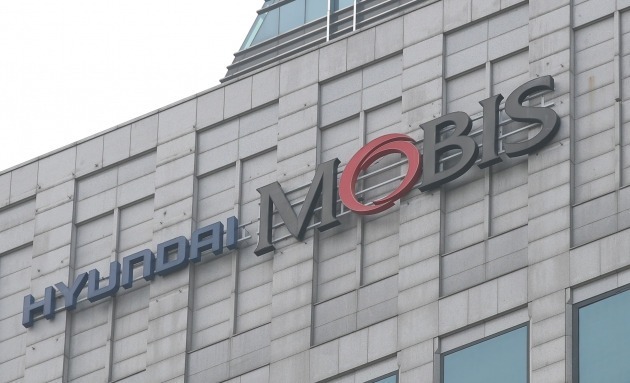Hyundai Mobis will split the module and parts divisions to establish two subsidiaries. Mobis, the surviving corporation, has a plan to make the production organization more efficient by leaving after-sales service (AS), R&D (R&D), investment, and electric field, which are the main sources of revenue. Although the plan and contents are different, the Mobis spin-off draws attention in that it was a key plan for the reorganization of Hyundai Motor Group’s corporate governance in 2018.
–
According to the automobile industry on the 12th, Hyundai Mobis recently confirmed a split plan to transfer the production of modules and core parts to new subsidiaries, respectively, and held a briefing session for executives. It is planning to launch a subsidiary in November as early as next month after forming a task force team within this month and conducting practical work.
The core of Mobis’ spin-off is to establish a new module corporation and a parts production corporation. The plan is to transfer the division that makes parts for finished cars into modules by assembling them in advance, and the division that directly produces parts such as braking, steering and airbags, respectively, to the newly established subsidiaries. If this plan is confirmed, the Mobis production function will be converted into a system of five subsidiaries in addition to the existing three companies: H Green Power (battery pack), Hyundai IHL (lamp), and GIT (Inspection).
The total sales of Mobis’ parts and module divisions stood at 33.23 trillion won last year, accounting for 79.7% of the total. However, profitability was very low. With an operating profit of 155.1 billion won last year, the operating profit margin was only 0.47%. Due to the low profitability, it is known that the two divisions are still mainly engaged in outsourced production.
In Mobis, the surviving corporation, the after-sales division, which is a ‘cash cow’, and the R&D/investment function, and the electronics division such as semiconductors remain. It is interpreted as the intention to create synergy by leaving the after-sales division with an operating profit of 20% and the electronics and R&D divisions that require investment to the surviving corporation. Lim Eun-young, a researcher at Samsung Securities, said, “It seems that while the production sector is being made as a subsidiary, the efficiency of the business structure and improvement of profitability are being promoted, and the electronics business, which requires a lot of investment, has been left as it is.”
In response to industry speculation that the spin-off might be related to corporate governance restructuring, the company called it an “irrelevant decision”.
Improved profitability by splitting modules and parts… Leave the AS division for the remaining Mobis
The reason Hyundai Mobis is splitting the production function into a new subsidiary is to reduce the weight of the organization. Although the module and parts division accounts for 80% of the total business, the operating profit margin is less than 1% (0.47% last year), a large division. It is analyzed that the intention of Hyundai Mobis is to promote efficiency and profitability improvement by dividing these production functions into subsidiaries.
However, it is expected that some production functions such as Hyundai Mobis’ battlefield will be omitted from this reorganization plan. The reason for their stay is that there is a labor union in the field and that mid- to long-term investment is required. Hyundai Mobis is expanding its investments in the automotive sector, including semiconductors, to solve the supply shortage of semiconductors for automobiles, a problem in the automobile industry.
Surviving Hyundai Mobis is expected to pour the cash it earned from the after-sales division, which has an operating profit rate of 20%, for the electronics and R&D functions. However, opposition from production managers in the headquarters, which is being converted to a subsidiary, is a variable in the spin-off plan. Hyundai Mobis is known to have prepared an incentive plan for converting workforce.
This spin-off draws more attention in that Hyundai Mobis was a key company in the reorganization of Hyundai Motor Group’s governance structure in 2018. The company’s position is that it has nothing to do with the governance restructuring, but the industry believes that the split will play a key role in the governance restructuring in some way. Although the reorganization is not being pursued right away, it is analyzed that the division will be carried out in a direction that makes it easier to plan for the future.
Hyundai Mobis is the central axis of Hyundai Motor Group’s corporate governance restructuring. It is the largest shareholder of Hyundai Motor, the core of the group, and holds a 21.4% stake. In order for the Hyundai Motor Group to cut off the circular shareholding that runs from Hyundai Mobis → Hyundai Motor → Kia → Mobis, Chairman Chung Eui-sun needs to secure as much stake in Mobis as possible. It is interpreted that if the Hyundai Mobis organization becomes slim through the spin-off, it may become relatively easy to promote the share exchange.
Kim Jun-seong, a researcher at Meritz Securities, said, “This change in Mobis’ business structure is intended to facilitate the reorganization of the group’s corporate governance. In the stock market on the same day, Hyundai Mobis rose 0.67% to 226,500 won, showing no significant change.
By Park Han-shin, staff reporter [email protected]
–


